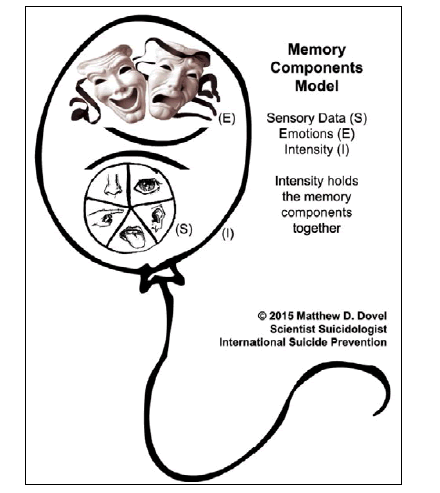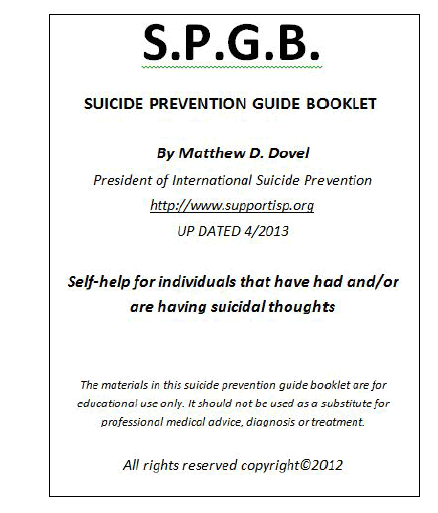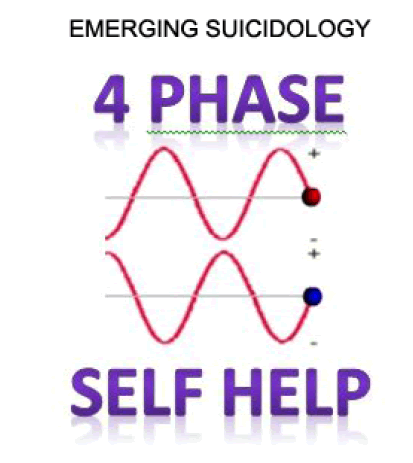Editorial Open Access
Suicide is a Permanent Solution to a Temporary Problem
Matthew D. Dovel*Scientist of Suicidology, International Suicide Prevention – Las Vegas, Nevada, USA
Visit for more related articles at International Journal of Emergency Mental Health and Human Resilience
Abstract
According to the work of Sigmund Freud, all human decisionmaking is based on one of two probable outcomes: avoiding pain or seeking pleasure. Behavior is influenced through past experiences and conditioning coupled with innate characteristics unique to each individual. Memories contain a hierarchy that is determined by the intensity level of an emotion at the formation of a memory. The only aspect of a memory that will influence in our decision-making process is the level of intensity present in a memory component.
It has been said that, ‘suicide is a permanent solution to a temporary problem’. This statement has never been truer than right now.
According to the work of Sigmund Freud, all human decisionmaking is based on one of two probable outcomes: avoiding pain or seeking pleasure. Behavior is influenced through past experiences and conditioning coupled with innate characteristics unique to each individual. Memories contain a hierarchy that is determined by the intensity level of an emotion at the formation of a memory. The only aspect of a memory that will influence in our decision-making process is the level of intensity present in a memory component. The higher the intensity, the greater a memory’s influence over our decisionmaking is. All depression, anxiety, PTSD, dissociative disorders, and suicidal thoughts have an inception memory, trauma and/or series of traumas conditioning. Once a source memory is identified, it can now be targeted for dismantling, utilizing a naturally-occurring phenomenon which takes place in all humans, and thus adjusting an individual’s perception of this reality. We can now target an entire memory and/or sensory triggers for dismantling. Once a memory has been dismantled, transitioned, it will not reform back into its original state.

Stigma has been determined to be the single biggest obstacle for individuals to overcome when experiencing suicidal thoughts. Stigma can be feared more by the emotionally compromised than oblivion, and is responsible for bypassing the basic survival instinct. Through this research, our primary objective is to bypass stigma and give practical solutions to those that have the willingness to seek out help.

What is a trauma? A trauma is any event outside the usual scope of our life experience. Memories are made of three components: sensory data, emotion(s), and intensity. Sensory data always changes as we experience life. We experience all human emotions by the time we are around five years of age and all emotions can be traced back to one of two: fear or love. Based on each person’s life experiences, we have a threshold that the intensity crosses either through extreme fear or love. Once the threshold has been crossed, a memory gets stuck in between the consciousness and sub consciousness, unable to be processed at the end of the day like all other memories. These traumas are huge power drains requiring substantial resources usually allocated to operate normal decision-making, planning, tasking, and daydreaming. Equilibrium must be reached as a form of coping with these conscious distractions that are constantly being reinforced through similar sensory data stimuli. That equilibrium comes in the form of depression, anxiety, PTSD, dissociative disorders, and suicidal thoughts.
A research project started in 1991 on behavioral modifications uncovered a pattern in how we naturally resolve conflict. It was observed that individuals could have extreme attachments to prior experiences, and within minutes, have these intense emotions immediately dissipated all with little or no memory of the intensity level prior. From there, a procedure was developed in 2006 called Emotional Memory Removal (EMR), which targets sensory stimuli triggers by phasing between audio, visual, and the kinesthetic while mentally focusing on an emotion related to a trauma. The EMR also bypasses stigma as it is self-help (Matthew D. Dovel, ‘Suicide Prevention Guide Booklets’, 2012).
A second procedure was developed in 2007 called ‘4 Phase’ and it targets traumatic experiences. The procedure 4 Phase is unique as it is self-help, quick, simple, and proven. 4 Phase was utilized in interventions from 2007 through the present by International Suicide Prevention as a means of addressing the cause of suicidal thoughts. In November of 2014, the procedure was placed online for those seeking self-help. Prior to the procedure going online at http:// www.supportisp.org, International Suicide Prevention averaged fifty website visitors and forty emergency suicide calls per month. A grant was made in November 2014 by Google for website presence upon hearing of this new option for the suicidal, and International Suicide Preventions website now receives over two hundred visitors per day. The 24/7 suicide hotline calls since November 2014 has dropped to an average of one caller per week (Matthew D. Dovel, International Suicide Prevention http://www.supportisp.org/suicidestatistics.html).
It must be noted that with targeted memory removal to be effective, individuals must have the willingness, but not the capacity, to forgive themselves and/or someone else.
Evaluating Results of (EMR) and ‘4 Phase’
• Ask yourself or someone else the intensity level of emotions attached to an experience using the 1-10 scale with ten being the highest. Afterwards, ask what the intensity level is when recalling the trauma.


• Ask yourself or someone else what the frequency of this event is in your consciousness, whether it might be all the time, daily, weekly, etc. One week afterward, ask what the frequency has been for the past week.
• Ask yourself or someone else immediately after the procedure, is there an empty feeling in the temple area? The answer should be yes. If not, repeat the procedure or find the real targeted memory.
• After the empty feeling in the temple area occurs, fatigue should occur within five minutes.
• The procedure is completed after you sleep which allows the memory to pass into the subconsciousness for processing.
Amnesic results limited to only the trauma are common with these procedures as targeted memories will no longer have the intensity that holds the memory components together. Without intensity, the targeted memory will no longer be involved in the decision-making process; thus, eliminating the need to seek equilibrium.
RESOURCES
Blake J. Graham January 2, 2013, The Art of Controlling Attention: A Master Pickpocket’s Story: http://theairspace.net/commentary/the-art-of-controlling-attention-a-master-pickpockets-story/Kendra Cherry Psychology Expert, What Exactly is Hypnosis: http://psychology.about.com/od/statesofconsciousness/a/hypnosis.htm
Matthew D. Dovel, Scientist Suicidology, International Suicide Prevention a 501(c)(3) public nonprofit charity, Emotional Memory Removal (EMR), ‘Suicide Prevention Guide Booklet’ and Trauma reduction procedure, ‘4 Phase’: http://www.supportisp.org.
Nero-Linguistic Programming: http://en.wikipedia.org/wiki/Neuro-linguistic_programming
Psychology defined: http://en.wikipedia.org/wiki/Psychology
Sigmund Freud 1922, Pleasure principle: http://en.wikipedia.org/wiki/Pleasure_principle_%28psychology%29
Top Ten Evil Experiments: http://listverse.com/2008/03/14/top-10-evil-human-experiments/
Unethical Human Control, Studies and Research on Humans, Romans: http://www.tribunesandtriumphs.org/roman-life/roman-punishment.htm--
Relevant Topics
Recommended Journals
Article Tools
Article Usage
- Total views: 24681
- [From(publication date):
specialissue-2015 - Aug 24, 2025] - Breakdown by view type
- HTML page views : 19885
- PDF downloads : 4796
